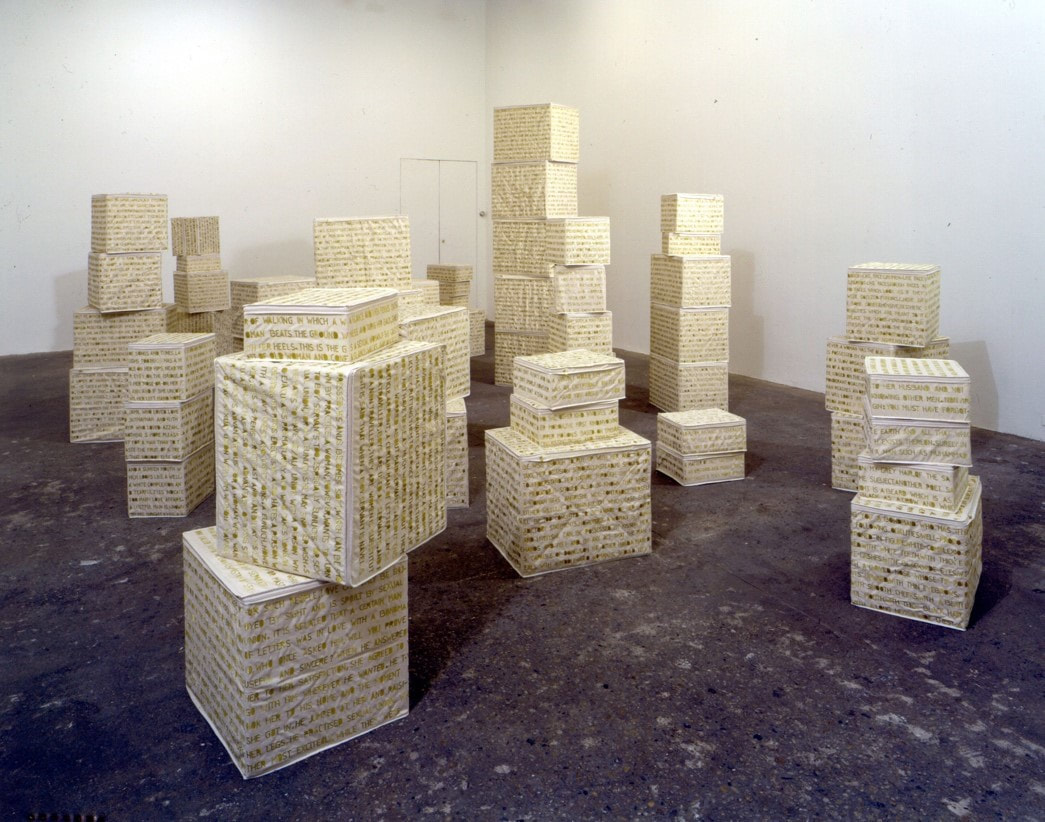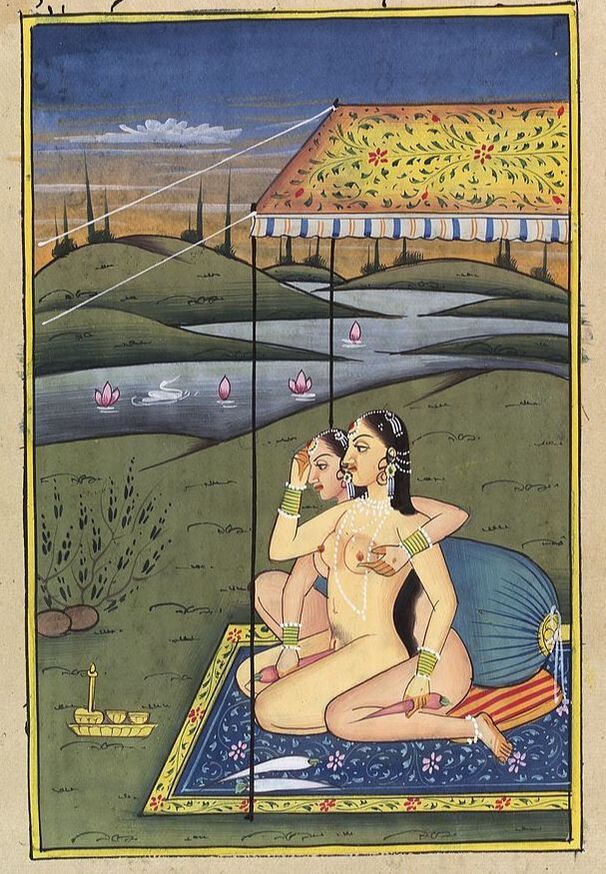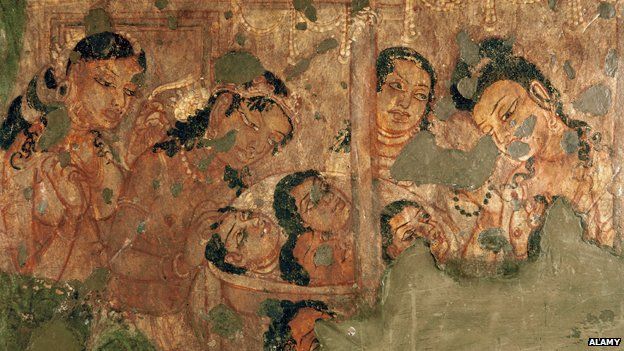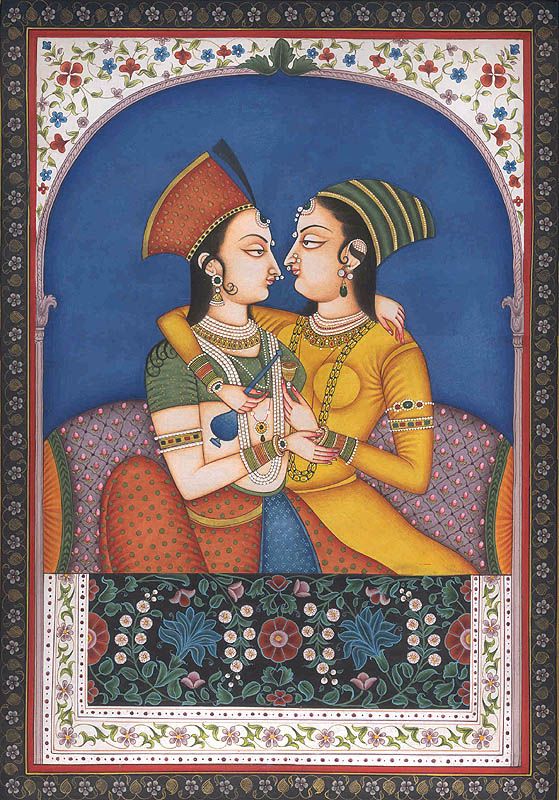|
Boyda Johnstone is a teacher, academic, and activist living in Jersey City NJ who has a PhD in medieval literature. She teaches at Borough of Manhattan Community College (CUNY) and has written blogs on feminism, productivity, and late capitalism. You can follow her on twitter at @boydajosa. Who knew that grinding saffron could become a potent metaphor for lesbian sex? Or that the first Arabic lesbian was known to have fallen in love with a Christian woman? These are just some of the magnificant findings I came across this summer when researching a project on medieval Arabic lesbians. Unfortunately, research projects like this one are often beset with access problems and a distortion of original materials by prejudiced, conservative, and western-biased editors. This project crystallizes the alarming rate at which early period materials are vanishing, those which can aid so deeply in the work of challenging reductive models of history. It also underscores the urgency with which we must work to preserve and recover old materials in an academically responsible manner. The tenth-century Ali ibn Nasr al-Katib’s Encyclopedia of Pleasure is exactly what it sounds like: a reference source for erotica, from kissing to aphrodisiacs to sexual positions to problems in coition, and its sheer length paired with the fact it appears in three surviving manuscripts suggests it was once very popular. Yet, it’s almost impossible to seize upon today. WorldCat indicates this translation is available only in three libraries in the world: the Library of Congress in DC, the University of Exeter, and the University of London. Personally, I am indebted to Dr. Everette Rowson of NYU for generously sharing with me his PDF copy. Upon finally getting my digital hands on it, I was dismayed to discover that the Introduction opens with the questionable claim that in the seventh century, “the Arabs were living a life which, in point of culture and progress, was nomadic and backward,” in an “environment dominated by backwardness, ignorance, idolatry and worship of the sun and the moon.”[i] While my project concerns lesbianism for which there is an entire chapter, I found that the Introduction also aligns lesbianism with pederasty and bestiality, telling a story of a woman who allowed a dog to draw her to orgasm before she accidentally suffocated it (23). Rather than celebrating the sexually liberated culture represented by the encyclopedia as a whole, the editors brush of medieval Arabs as living lives of “sexual perversion” (25). Since these are not only the editors but also the translators of the following resource, how was I to trust their translation was undertaken responsibly, with sensitivity to the pleasure principles and advice which seem an honest objective of the encyclopedia as a whole? Unfortunately even modern Arabic editions of Encyclopedia of Pleasure suffer from editorial bias and bowdlerization. According to one of the only scholars examining such materials globally, Sahar Amer of the University of Sydney, essential information is blackened out in the modern Arabic version of Encyclopedia of Pleasure: the paper contains imprints of large red trees that make reading difficult, and the chapter on lesbianism is conspicuously absent.[ii] In response to the increasing disappearance of a vast well of knowledge into medieval Arabic attitudes toward sexuality, Ghada Amer—who happens to be Sahar’s sister—built a large-scale sculpture inspired by The Encyclopedia of Pleasure in 2001. Of the work, G. Amer writes, “I have chosen to illustrate passages from this forbidden book as a protest against the loss of great freedom.”[iii] The passages selected foreground women’s pleasure and desire, and golden embroidery on the boxes delivers a parallel between sexuality and spirituality as though the encyclopedia becomes a sacred Qur’an. The physicality of these boxes, imprinted with erotic lines from a world that begins to seem far more open than our ostensibly sex-positive modern standards, stands as an affront to both the decreasing availability of the pleasure book as well as to the ephemerality of digital editions upon which so much of our understanding of old literature and resources increasingly depends. Encyclopedia of Pleasure is not the only erotic Arabic text to become the victim of modern prejudice. The pleasingly named Gay Sunshine Press printed Ahmad al-Tifashi’s thirteenth-century A Promenade of the Hearts; or What Does Not Exist in Any Book as The Delight of Hearts in 1988, proudly exhibiting sections on male homosexual relations from the original Arabic in accordance with its “solid reputation as a firm specializing in its publication of gay literature.” One wants to applaud a publishing enterprise that claims it “cannot take heterosexual literary projects” due to “budget and for policy reasons.”[iv] Unfortunately ‘gay literature’ apparently applies only to men; an entire chapter from the original on lesbianism is eliminated. According to Amer this missing section describes a community of same-sex female relations.[v] Books of Pleasure The Encyclopedia of Pleasure distills together thousands of erotic encounters, experimental dynamics, and variegated belief systems around sexuality, relationships and love in the Arabic Middle Ages. In chapter four alone are listed twenty-six different terms for ‘vulva’ (and only twelve terms for penis). Unlike in European languages, medieval Arabic texts actually contain specific terminology to denote lesbian sexual activities (sahq, sahiqa, musahaqat al-nisa’, sahiqa, all of which refer to pounding and rubbing actions).[vi] It is no wonder that the sexual behavior of women was treated with an attitude of acceptance in medieval Islamicate culture: female homosexual sex was often not considered a breach of adultery laws and had the obvious advantage of avoiding potential extramarital pregnancies. Unlike male homosexuality, female homosexuality was not punishable by death. In fact, homosexual acts amongst women were sometimes upheld as a means of preserving marital fidelity and virginal chastity for heterosexual dynamics. The encyclopedia does not try to erase the reality of same-sex desire and love. The section on lesbianism begins with the following obviously bogus scientific explanation: “women, whose vaginas are short, experience pleasure in sexual union with men, since the penis will reach the bottom of a short vagina while it fails to reach the bottom of a deep vagina and, consequently, women who have deep vaginas fail to get pleasure in sexual union with men, which accounts for the fact why they turn to lesbianism” (ch. 10, p. 188). Bogus, perhaps, but empirical in its own way (and I hesitate to make a comment about the implied size of men’s penises). Another collected source claims that “Lesbianism is due to a vapour which, condensed, generates in the labia heat and an itch which only dissolve and become cold through friction and orgasm” (p. 188). Here the logic is that the discharge that a woman releases is cold and the discharge that men release hot, so it is only labial rubbing that can release the kind of vapour that would cause women’s arousal to be soothed. Physiological descriptions such as these are pervasive in medical treatises and treat lesbianism as an innate incurable condition rather than some kind of disease, as is sometimes expressed today. Same sex erotic expression becomes a means of soothing rather than ‘curing’ lesbian desire and there is little sense of condemnation. The Promenade of Hearts (according to Amer’s description since I was not able to secure a copy) delineates the sounds that are meant to accompany lesbian sex acts, and offers a description of what the author calls “the saffron massage” because it is based on the physical motions of grinding saffron: "This is how they act: the one that must stay underneath lies on her back, stretches out one leg and bends the other while leaning slightly to the side, therefore offering her opening (vagina) wide open: meanwhile, the other lodges her bent leg in her groin, puts the lips of her vagina of her companion in an up and down, and down and up, movement that jerks the whole body. This operation is dubbed ‘the saffron massage’ because this is precisely how one grinds saffron on the cloth when dyeing it. The operation must focus each time on one lip in particular, the right one for example, and then the other: the woman will then slightly change position in order to apply better friction to the left lip…and she does not stop acting in this manner until her desires and those of her partner are fulfilled. I assure you that it is absolutely useless to try to press the two lips together at the same time, because the area from which pleasure comes would then not be exposed. Finally, let us note that in this game the two partners may be aided by a little willow oil, scented with musk."[vii] Murals in the temple at Ajanta Nowadays we might scoff at this description of what is now known as ‘scissoring,’ but here it is conveyed in a tone of respect and attention to mutual female pleasure. The Encyclopedia of Pleasure paints a desirable, compelling and even poetic depiction of lesbian love. The following is a written between a woman and her girlfriend: “I have been worried and restless / Since we ceased to practice lesbian intercourse, O girl! / Our life went on smoothly and then / Lo! Time’s misfortunes befell us. / I wonder whether we shall be able to return to lesbian intercourse / For the fire in my heart cannot be extinguished” (191). We are also told “How wonderful it would be to practice lesbian intercourse forever! / And how disgusting heterosexuality is” (191). The Encyclopedia describes such pleasure during lesbian sex that “we lose consciousness and move like a branch of a tree shaken by the rain” (192). It also tells the story of what was known to be the first lesbian couple, a Christian and an Arabic woman who were endlessly devoted to one another even beyond death, the Christian naming a monastery after the other. Never a static proponent of lesbian practices, however, the encyclopedia also describes how lesbians will sometimes prefer heterosexual intercourse once they try it for the first time—because ‘once you try the flute you forget about the tambourine—and other voices mock homosexual practitioners. It is not my intention to argue for this source as a thoroughly ‘woke’ lesbian manual; but it must be included in cultural conversations about the medieval Arabic world, partly in a project of educating ourselves about Arabic culture in the present. Few scholars even in Arabic countries have attempted to tackle homosexuality within the medieval Arabic literary tradition and even fewer specifically lesbian desire. Recuperating these sources today not only has the effect of swapping some great tips for sexual positions, but also of countering enduringly reductive narratives about Islamicate culture as the west continues its ‘moral crusade’ against the east and considers itself the sole harbinger of sexual freedom.[viii] Working to salvage narratives of queer love and desire both in terms of the kinds of materials chosen for modern publication and how we reframe them today not only preserves lesbian histories but can also challenge modern stereotypes regarding whose culture is sexually free. [i] Abul Hasan Ali Ibn Nasr al-Katib, Encyclopedia of Pleasure, ed. Salah Addin Khawwam, trans. Adnan jarkas and Salah Addin Khawwam (Toronto: Aleppo, 1977), 1.
[ii] Amer, Sahar. “Cross-Dressing and Female Same-Sex Marriage in Medieval French and Arabic Literatures.” Islamicate Sexualities: Translations Across Temporal Geographies of Desire (Cambridge: Center for Middle Eastern Studies of Harvard University, 2008), n. 6. [iii] “Encyclopedia of Pleasure.” Jeffrey Deitch. http://deitch.com/archive/exhibitions/encyclopedia-of-pleasure. [iv] al-Tifashi, Ahmad. The Delight of Hearts, Or: What You Will Not Find in Any Book. trans. Edward A. Lacey (San Francisco: Gay Sunshine, 1988). [v] See Sahar Amer, “Medieval Arab Lesbians and Lesbian-Like Women.” Journal of the History of Sexuality 18.2 (2009): 220. Amer describes a medieval Arabic literary erotic tradition in which “lesbians are said to have formed groups, to have held meetings, and to have led schools in which they taught other lesbians how best to achieve pleasure” (219). [vi] Sahar Amer, Medieval Arab Lesbians and Lesbian-Like Women.” Journal of the History of Sexuality 18.2 (2009): 215-236. [vii] From The Promenade of Hearts, trans. Amer in “Medieval Arab Lesbians” 220-221. [viii] The phrase “moral crusade” is Lila Abu-Lughod’s, in “Do Muslim Women Need Saving?” Time.com. Nov. 1, 2013.
6 Comments
8/26/2019 06:35:52 pm
Fascinating read, but disturbing in regard to the loss of important texts. What a brilliant task to have engaged in! Thanks for sharing!
Reply
Boyda Johnstone
8/31/2019 12:41:25 pm
Thank you so much!
Reply
Nicholas Matthew Cortese-Kramer
1/26/2020 10:04:36 am
Hi Ms. Johnstone. Is it possible to request a digital copy of the encyclopedia? I'm a researcher of comparative religion and I find this could be potentially relevant to a serious academic study in the heresiology field and any help would be greatly appreciated. Thank you for your time. Nicholas
Reply
Qamar
10/29/2020 04:57:14 am
People aren’t “Arabic.” They’re Arabs. And “Arab” isn’t synonymous with Muslim. The fact that your second sentence makes the “astonishing” claim that an Arabic woman and a Christian woman fell in love (who do you think some of the oldest Christian communities in the world are?) makes me question the soundness of anything else that follows this. You question the anti-LGBT bias & scientific knowledge of medieval and modern Arab (or do you mean Muslim?) authors & translators without acknowledging or interrogating your own anti-Arab, anti-Islamic biases.
Reply
Layla Tabbal
4/18/2021 06:11:28 pm
Thank you for this wonderful read - I was wondering if I could request a digital copy or pdf of the Encyclopedia of Pleasure? I am a student at Columbia University in Islamic studies and looking for a copy for a professor, I have looked all over to no avail. Would be greatly appreciated. Also welcoming suggestions of any Islamic texts on sex/sexuality. Thank you!
Reply
Leave a Reply. |
Sex History ContentsIf you would like to submit an article, please fill out a submission on the Contact page Archives
September 2020
|





 RSS Feed
RSS Feed